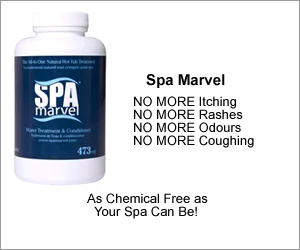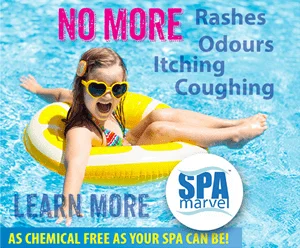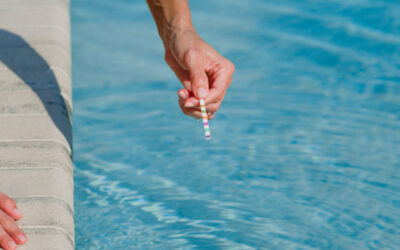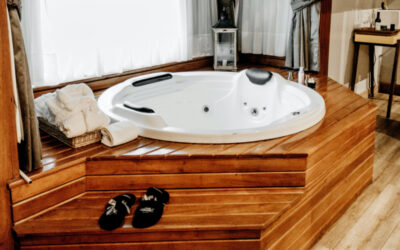Natural Hot Tub Chemicals – A Chlorine Alternative For The Hot Tub
Do you want to defeat skin irritation and the smelly chloramines associated with chlorine and bromine? If so, there’s more than one chlorine alternative for your hot tub to choose from. While chlorine and bromine are the most commonly used hot tub sanitizers, natural spa chemicals can eliminate or reduce the use of those harsher ones.
Options for a hot tub without chlorine, or less of it, include hot tub water treatment systems as well as all-natural hot tub chemicals that sanitize or treat the water.
BIGUANIDES PROVIDE A HOT TUB WITHOUT CHLORINE
Biguanide is an organic compound derived from guanidine, which is found in turnips and other vegetables. As a chlorine alternative for the hot tub, biguanides provide a more natural hot tub without the cost or hassle of sanitizer systems that require special equipment.
Is this chlorine alternative for the hot tub a sanitizer?
Despite their germ-killing ability, biguanides don’t break down organic materials such as bodily fluids. So biguanides require the use of hydrogen peroxide to sanitize.
What are the pros and cons of biguanides?
Biguanides better handle high water temperatures than chlorine and many other sanitizers. They’re also more gentle on the hair and skin and don’t cause damage to bathing suits or have the odor associated with chlorine.
The problem with biguanides is water clarity can be a challenge. Another issue is foaming, which can result in extra daily work to keep the foam cleared to ensure the sanitizer can do its job. Also, some microorganisms eventually develop immunity to biguanides. When this happens, hot tub water maintenance becomes a hassle. Maintenance costs also go up as more biguanides are required to replace those destroyed by frequent shocking of your spa.
Minerals are natural spa chemicals
Minerals are not a chlorine alternative for the hot tub. But they are among the all-natural hot tub chemicals that can reduce chlorine use. The minerals used in these treatment systems include copper, silver, and sometimes limestone, which inhibit the growth of algae and bacteria and help to maintain pH levels.

What are the pros and cons of these natural spa chemicals?
The benefits of these natural spa chemicals are a reduction in chlorine, which is better for the eyes and skin. Chlorine reduction can also eliminate the smelly chloramines. Minerals are also inexpensive in comparison to chlorine and other sanitizers. Plus, they’re easy to use.
On the downside, the use of chlorine or bromine is still necessary. Another problem is the copper in mineral sanitizers can stain the surface of your hot tub.
What is the process of using mineral sanitizers?
These sanitizers come in several forms. An inline system is one option. But you’ll want to decide on this before buying a spa because inline systems come pre-installed only on select models by just a few hot tub manufacturers. They include Caldera Spas, Marquis Spas, Artesian Spas, and Hot Springs Spas.
If you already have a spa or prefer not to purchase one of these, other mineral sanitizers are available as well. One option is filter sticks. These go just where their name suggests, in the filter. Minerals are then released into the water as it filters.
Hot tub enzymes are all-natural hot tub chemicals
These natural spa chemicals are available in hot tub water treatments and conditioners. Using the best hot tub enzymes can bring you closer to a chlorine-free hot tub (if chlorine is your preferred sanitizer). They can also be used with bromine and other sanitizer systems, so you can enjoy a more natural hot tub.
What exactly are hot tub enzymes?
They’re biological molecules, usually proteins, which accelerate cellular chemical reactions. Enzymes are busy everywhere, both in nature and industry. They’re what enables photosynthesis in plants and trees. They aid in our digestion, respiration, and nerve and muscle function. They’re even used in paper manufacturing and food processing, among many other processes.
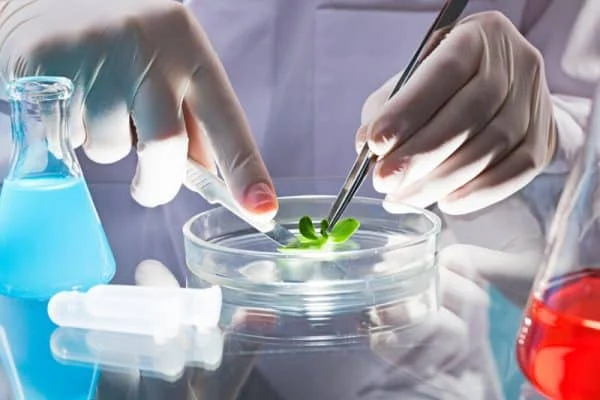
How do hot tub enzymes work?
When added to water, hot tub enzymes attach themselves to organic material and naturally break it down. Organic material includes hair care products, makeup, sunscreen, dirt, bodily fluids, and other material, removing the food necessary for bacteria to live. Still, even the best hot tub enzymes cannot attach themselves to, or react directly with, living bacteria. It is good practice to use sanitizer with enzymes.
Why use hot tub enzymes?
You may be wondering why to bother with hot tub enzymes if sanitizer is still required. That’s because the best hot tub enzymes reduce the amount of sanitizer needed by doing some of the sanitizer’s job. As a result, you can enjoy the benefits of a more natural hot tub.
Where to find hot tub enzymes
Several hot tub enzyme treatments are available on the market. According to many spa owners, the best hot tub enzymes can be found in Spa Marvel Water Treatment & Conditioner, which offers other benefits as well. Spa Marvel:
is non-toxic and safe for the environment.
prevents buildup in the spa’s plumbing, including bio-film and scale.
extends the time between changing the water
makes balancing hot tub water easier and requires less frequent maintenance
Spa Marvel is available through many hot tub dealers and spa supply retailers.

More options for a chlorine alternative for your hot tub
Several other options are available that also deserve mention. The following require the purchase of special equipment, which is addressed in more detail in our article Best Hot Tub Chemicals for Sensitive Skin.
UV light systems offer a more natural hot tub. Still, they do require either chlorine or bromine-based sanitizer.
Saltwater chlorine generators do not provide for a hot tub without chlorine. Through the use of salt, these systems generate chlorine that’s chemically-altered, eliminating the chloramine odor and gentler on the eyes and skin.
Ionizers release heavy metals to kill bacteria. They can provide a chlorine-free hot tub, although another registered sanitizer must still be used with them.
Ozone water treatment can also provide a chlorine-free hot tub with the use of another sanitizer.
Tips for a natural or chlorine-free hot tub
All-natural hot tub chemicals or special sanitizing systems for a hot tub without chlorine aren’t the only way to enjoy a more natural hot tub. The following tips include natural spa chemicals for cleaning your spa and other ways to move closer to a chlorine-free hot tub.
Keep contaminants out of the spa
Ask bathers to shower and wash their hair before entering the hot tub to remove body lotion, sunscreen, deodorant, hair products, dead skin, sweat, and other bodily fluids. This will make it easier to maintain a hot tub without chlorine or less chlorine.
Measure chemicals twice
Mismeasuring the chemicals you add to your spa not only can result in adding more harsh chemicals than necessary. It can counter your efforts to move closer to a chlorine-free hot tub. That’s because mismeasuring can tip the balance of other water chemical levels requiring the use of more chemicals to get the water under control.
Keep your filters clean
To help maintain water sanitizer levels, rinse hot tub filters weekly, clean them monthly, and replace them annually whether you have a chlorine-free hot tub or not. A safe, effective choice without the harsh chemicals commonly found in other cleaners is Spa Marvel Filter Cleaner. It’s also more economical than most filter cleaning agents.



